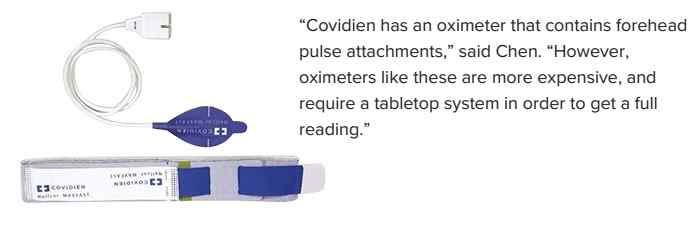Portable Pulse Oximeter
Portable Pulse Oximeter is a noninvasive and painless device to measures oxygen saturation level, or the oxygen levels in blood. It can rapidly detect even small changes in how efficiently oxygen is being carried to all of its cells, tissues, and organs.
Portable Pulse Oximeter can be used to measure oxygen saturation levels along with heart rate.
Portable Pulse oximeter can be used to monitor the health of a person with any type of condition that can affect blood oxygen levels.
These conditions include:
1. chronic obstructive pulmonary disease
2. asthma
3. pneumonia
4. lung cancer
5. anemia
6. heart attack or heart failure
7. congenital heart defects
How Portable Oximeter Works
To measure oxygen level, a probe that looks like a bag clip is placed onto fingertip, toe, or earlobe. Light beams pass through the blood, measuring the amount of oxygen gas. It does this by measuring changes of light absorption in oxygenated blood containing high oxygen level or deoxygenated blood containing low oxygen level. This is a painless, noninvasive method of measuring the saturation level of oxygen in a person's blood.
Procedure Steps
One
Remove nail polish or false nails
Two
Warm the hand
Rest at least 5 minutes before taking your measurements
Rest of your hand on your chest at heart level and hold it still
Five
Switch on Portable Pulse Oximeter and place it on middle or index finger
Six
Place the Portable Pulse Oximeter for a minute or longer if the reading is not stable
Record the highest result which is not change for 5 seconds
Eight
Record the reading 3 times a day at the same times normally after food intake
Oxygen Levels in Human Body:
- A normal blood oxygen level is in between partial pressure of 75 and 100 millimeters of mercury.
- A blood oxygen level reading below 60 mm Hg is considered as low and may need a supply of oxygen.
- An oxygen saturation level of 95 percent is considered good for most healthy individuals.
- A level of 92 percent indicates "hypoxemia", is a state in which oxygen is not available in sufficient amounts at the tissue level to maintain adequate regulating process inside the body.
Symptoms of low blood oxygen levels:
- Shortness of breath ( tightening in the chest, difficulty breathing, or a feeling of suffocation)
- Headache (a pain in your head or face)
- Restlessness
- Dizziness (weak or unsteady)
- Rapid breathing
- Chest pain
- Confusion (feel as if you can't think clearly)
- High blood pressure
- Loss of coordination (unable to control the position of arms, legs or posture)
- Vision Problems or Blurred vision
- Sense of euphoria (feeling exaggerated, or extremely happy)
- Rapid heartbeat
Causes of low blood oxygen levels:
- Low air oxygen level
- Lack of ability of the lungs to inhale and send oxygen to all cells, tissues and organs
- Slow bloodstream to circulate to the lungs, collect oxygen, and transport it around the body
Conditions and situations can contribute to the above factors includes:
- Asthma (disease that affects lungs)
- Heart diseases, including congenital heart disease
- High altitude
- Anemia (lack enough healthy red blood cells)
- Chronic obstructive pulmonary disease or COPC
- Interstitial lung disease or ILD
- Eemphysema (lung condition that causes shortness of breath)
- Acute respiratory distress syndrome or ARDS
- Pneumonia (infection in one or both lungs)
- Obstruction of an artery in the lung, due to a blood clot
- Pulmonary fibrosis or PF (lung disease occurs when lung tissue damaged and scarred)
- Collapsed lung or punctured lung
- Excess fluid in the lungs
- Sleep Apnea (sleep disorder)
- Medications, narcotics and painkillers
5 Best Basic or Simple Portable Pulse Oximeter
4. Covidien Nellcor SpO₂ Forehead Sensor with OxiMax
oximeters in Pakistan













Comments
Post a Comment